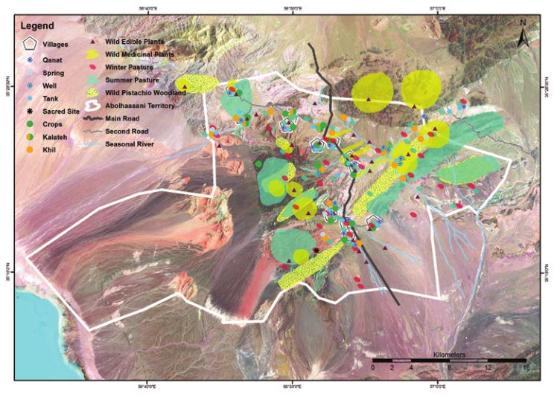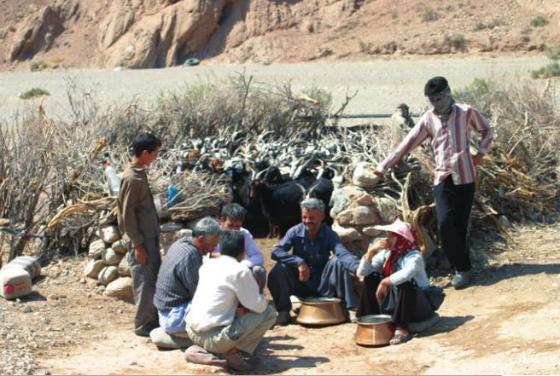- Acaparamiento de tierra
-
Politicas de tierra
- Por una nueva política de tierras agricolas en Francia
- Políticas de tierra e historia agraria en Europa
- Políticas de tierra en el medio rural en Francia durante el siglo XX
- La tenencia de la tierra en Africa occidental. Documentos pedagógicos.
- Reformas Agrarias en el Mundo
- La experiencia del Código Rural en el Níger
- Políticas de tierra y Reforma Agraria. Cuaderno de propuestas.
- Bosques
- Agua
- Gobernanza de los territorios
- FMAT - Foro Mundial sobre el Acceso a la Tierra 2016
- Otras Conferencias y Foros internacionales
- Videos de conferencias - Reuniones Temáticas de AGTER
- Entrevistas con algunos miembros de AGTER
- Capacitación - Enseñanza
- Formación - Viajes de estudio
- Enseñanza - Modulos de capacitación
- Editoriales - Boletín de información de AGTER
- Preservar el medio ambiente y los grandes equilibrios ecológicos
- Mejorar la participación de los pueblos a la toma de decisión a nivel nacional y a nivel local
- Respetar los derechos humanos fundamentales. Disminuir las desigualdades
- Construir una gobernanza mundial eficaz. Construir la paz
- Hacer que la producción agrícola cumpla eficientemente con sus roles. Eliminar el hambre
- Valorar y proteger la diversidad cultural
- Tomar en cuenta las necesidades de las futuras generaciones. Administrar los «comunes»
Título, subtítulo, autores. Búsqueda en www.agter.org y en www.agter.asso.fr
Búsqueda en texto completo con Google
Governing a territory of life is key to responding to climate change. The experience of the Abolhassani Tribal Confederacy (IRAN)
Case example # 3 of Nourishing life - territories of life and food sovereignty. Policy Brief of the ICCA Consortium # 6
Escrito por: Michel Pimbert, Grazia Borrini-Feyerabend
Fecha de redaccion:
Organizaciones: Indigenous Peoples’ & Community Conserved Territories & Areas (ICCA Consortium), Centre for Sustainable Development & Environment (CENESTA), Research Centre, Agroecology, Water and Resilience - Coventry University (UK)
Tipo de documento: Artículo / documento de difusión amplia
Fuentes documentales
Pimbert, M.P. and G. Borrini-Feyerabend, 2019. Nourishing life - territories of life and food sovereignty. Policy Brief of the ICCA Consortium # 6. ICCA Consortium, Centre for Agroecology, Water and Resilience of Coventry University and CENESTA, Tehran.
Resumen
This case example is summarised from presentations by M. Taghi Farvar, personal communications by Ghanimat Azhdari and Ali Razmkhah (2019), and information available from the P.K. Feyerabend Foundation website.
For centuries, the Abolhassani indigenous tribes have lived and migrated seasonally in a peri-Central-Desert area known as Touran, one of thirteen UNESCO Biosphere Reserves found in Iran. Their ancestral domain — now a territory conserved by the Abolhassani Indigenous Nomadic Tribal Confederacy — covers about 74,000 hectares within the Reserve. The entire territory of the Abolhassani was declared to be state property by the regime of the Shah in 1963, as part of a vast campaign of nationalisation of natural resources in the country. Through the work of many years and the support of a visionary civil society organisation that helped about that, the Confederacy is now re-empowered and fully involved in governing its territory. Each one of the 12 tribes is represented by two trusted elders in the tribal Council of Elders, in charge of decision making over the territory. The restoration, strengthening and registration of the tribal system have been key for community empowerment. The Council of Elders and its constituent Women’s Committee give voice to the tribal confederacy. All decisions are discussed in the Council of Elders and approved only after consultation with each of the 12 tribes. This setup provides the basis for participatory and deliberative democracy.

The territory of Abolhassani Confederacy has a remarkably high animal and plant diversity. An estimated 800 plant species have been identified, more than 20% of which are endemic (and some may still be unknown / unrecorded). There is an exceptional diversity of wildlife, including the endangered Asiatic cheetah, Iranian leopard, Houbara bustard, and gazelles, among others. The Abolhassani rarely hunt animals and respect the daily division of their water sources between wildlife and livestock — facilitated by the improvement of water supply and management system. In recent years, under the pressure of unprecedented droughts, they have even reinstituted a pastoralist tradition called hanar — watering the animals once every two days, instead of every day, during the cooler autumn and winter seasons. For that, they have reintroduced drought - resistant indigenous breeds in their herds, which allows the animals to go twice as far from the water sources, relieving pressure on natural rangelands due to better distribution of grazing. The revival of the hanar system has also facilitated sharing available water sources between livestock and wildlife.

As another response to the enhanced dry spells, the Abolhassani have also ‘reinvented’ their agricultural patterns. In the past dozen years, they have undertaken to cultivate new crops or reallocate them to animal feeding. With some help from the government, they managed to enhance their production by adding irrigation via traditional underground water management system (qanats) and water storage systems. Instead of depending only on rain-fed wheat and barley, as they did in the past, the Abolhassani have learned to use agricultural products and residues as supplementary feeding for their migratory herds of sheep, goats and draft animals — thereby reducing grazing pressure on natural rangelands. While doing this, they have also implemented a successful micro-credit programme and reinstituted the traditional intertribal mutual aid and solidarity agreements for sharing rangelands among drought affected tribes — a practice that had been forbidden by government agencies.
The innovations of the Abolhassani include agricultural crops for income and fodder. Pistachios, cotton and watermelon, sunflower seeds and barley are used for both direct sale and to improve the feeding of livestock, bringing in better income and securing livelihoods. The microcredit programme supporting this has also helped to revive the customary governance system of the tribe. The sustainable livelihoods fund (sanduq) ensures collective ownership of tribal assets and initiatives. Women benefit by undertaking credit and engaging in diversified livelihood activities (e.g., handicraft, dairy production, sustainably collection of non-timber products from forests and rangelands). Through innovative cultivation of garden vegetables and some fruits, the health, nutrition and food security of the people have also improved. The community—now stronger because again well organised— has also managed to exert pressure on the government for better services for education and health care, and obtained small-scale piped water for drinking, public electricity and telephone coverage.

The Abolhassani affirm that the crucial conditions for their capacity to adapt to climate change has been their relatively recent reorganisation along traditional lines and the capacity to govern and manage their territory of life as they see fit. They are sharing their experience with other tribes and encouraging them to join the federation of indigenous nomadic tribes of Iran (UNINOMAD) to take control of their own affairs and, in particular to govern their migration territories according to traditional knowledge and skills.
The full Policy Brief of the ICCA Consortium # 6 can be downloaded below.
Document Content
-
1/ Territories of life
-
2/ Food Sovereignty
-
3/ Do territories of life advance and secure food sovereignty? Eight case examples:
-
Karen people - Burma / Myanmar
-
Wampis nation - Peru
-
Abolhassani tribes - Iran
-
Djola people - Casamance, Senegal
-
Cañamomo Lomaprieto - Colombia
-
Krayan Highlands - North Kalimantan, Indonesia
-
Shellfishers on foot - Galicia, Spain
-
Xcalot Akal - Mayan territory of Yucatan, Mexico
-
-
4/ Discussion
-
5/ Expanding territories of life & food sovereignty - options for action and practical recommendations
-
6/ Recommendations
Descargar el documento
Recurso
Desafiós
- Los habitantes asumen la gestión de sus territorios
- Reducir las emisiones de gases de invernadero
- Preservar la biodiversidad natural y domestica
- Reconocer los conocimientos y las prácticas de los campesinos, de los pastores, de los cazadores y recolectores, de los pescadores
- Soberania alimentaria
Zona geográfica
Ver también
- Les voyages d’étude, un outil pour favoriser l’apprentissage et contribuer au changement. (Ed. # 49)
- Viajes de estudio: una metodología para generar procesos de aprendizaje y transformación. (Ed. # 49)
- Study tour; a tool for learning and creating change. (Ed. # 49)
Organizaciones




 Agter participa en la Coredem
Agter participa en la Coredem